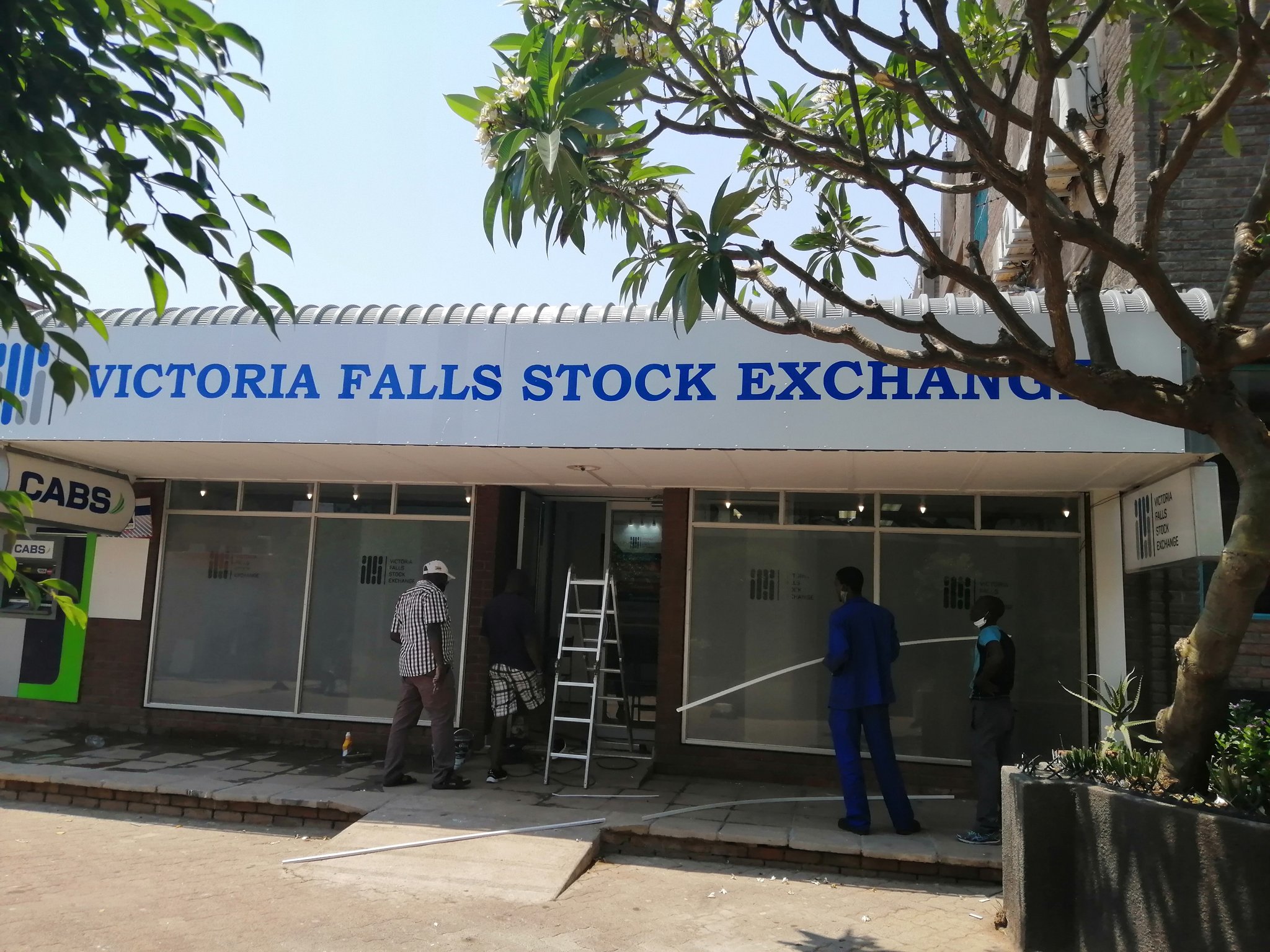The cost of complexity in financial markets
Banks have been increasing charges aggressively over the past few years and certainly since the introduction of our new structured currency — the ZiG — in April 2024.
They have taken advantage of the captured nature of their customers who are required to use formal banking channels without anything empowering them to demand a return on their deposits or to be offered alternative low-cost options.
The most puzzling aspect of this vastly uneven relationship is that banks are profitable with cost-to-income ratios of 57 percent and non-performing loan ratios of 2,02 percent on average as at June 2024.
However, should the bank run into “a spot of bother”, customer deposits will immediately be frozen with little recourse.
Unfortunately, we have lived through several episodes of banking and currency crisis as a country and the mistrust of formal financial systems has grown with each episode.
The high bank charges do little to mend the lost trust. Most people feel the financial systems are rigged to exploit them.
They feel they have very little agency to be able to get a fair arrangement when dealing with their bankers leading to a growing shadow banking system which does not seem to be getting the attention it deserves.
These leakages from formal financial systems are the true cost of this cost/complexity combo in our banking systems.
The banks on their part argue that banking systems are expensive and they need to share the cost of these systems with their customers.
Banking systems are indeed complex integrated applications that need to keep accurate tracking of transactions, link to Automated Teller Machines (ATMs), link to payment platforms such as the RTGS and ZIPIT systems, link to loan modules, send notifications to emails and phones on transacting, perform so many other behind the scenes operations like risk reporting and intrusion threat assessment/prevention that keep your funds safe and secure within the banks.
The argument is compelling until you realise that most banks are used for purely transactional purposes by the majority of their customers. These customers are in turn given limited access to proper bank intermediation services such as short-term credit, mortgages, currency conversion or high return investments.
This makes it more expensive for customers as they are unable to leverage their long-standing relationships with their bankers to access affordable capital or investment products. Certain bank customers are unable to form capital as their savings are depleted by high bank charges and are unable to access affordable capital as banks are unwilling to offer them credit.
Another way this denial of service happens is through high minimum limits for purchasing investments and very low maximum limits given on lending products.
Financial technology (fintech) and digital finance (DFS) systems have lowered the costs of processing transactions throughout the global financial markets to fractions on the cent in some cases. These systems are able to integrate multiple accounts and wallets across financial institutions and in some cases deliver a single dashboard to customers for fractions of the cost that banks are charging.
Digital finance products like mobile wallets, internet banking and fintech providers like ZIPIT, O’ Mari and Innbucks are offering transactional services at much lower costs, but integrations with traditional banks remain complex and expensive.
We have to ask, is the complexity of traditional banking systems serving the customers? Should banks really be allowed to charge monthly service fees, when the majority of their customers are able to operate their banking accounts digitally with very little need to access banking halls or in person services?
Perhaps it is time for policymakers to decisively step in and protect customer’s savings by pushing traditional banks to innovate around customer needs and technologies, especially for credit products, by removing monthly bank charges altogether?
Another part of the financial sector we have looked into is the stock market. Investments in the stock market are inherently complex as there are a lot of factors to be considered before investing.
Even though the stock exchanges and security market regulators work really hard to simplify the technical processes of investing, investors still need to navigate through a myriad of other issues to be able to make sound investments. This complexity is why it is always important to get sound advice from licensed professionals.
Maybe to highlight the extent of complexity in this sector we will go through some of the things ordinary retail investors need to navigate through with specifics from the Zimbabwe market.
First, the choice of investment instrument. The Zimbabwe stock market now has several investment instruments listed and available for investors to select from. These include equities (or ordinary shares), Real Estate Investment Trusts (REITs), Exchange Traded Funds (ETFs), Depository Receipts (ZDRs), Debentures, Derivatives (or options), Warehouse Receipts (on the commodities exchange), Collective Investment Schemes (unit trusts) and the recently launched Contract for Differences (CFDs) with more products planned to be introduced onto the market.
Secondly is the variety of actual listed/traded instruments. Five ETFs, two REITs, 2 ZDRs, one debenture, 53 equities (split between three exchanges), 48 Collective Investment Schemes, 48 commodities that trade using Warehouse Receipts (split between 19 in the grains and oil seeds category, 22 horticultural products, seven livestock and by-products category), several derivate contracts currently open on the C-Trade platform as well as some unit trusts.
Thirdly is the choice of trading venues or exchanges. The main exchange remains the Zimbabwe Stock Exchange (ZSE). We also have the Victoria Falls Stock Exchange established in 2020 to trade exclusively in United States Dollars (USD).
The Financial Securities Exchange (Finsec) which is an alternative exchange on which equities and derivatives are traded.
Lastly is the commodities exchange called the Zimbabwe Mercantile Exchange (ZMX) on which commodities are traded using Warehouse Receipts. Each exchange has its own nuanced processes and procedures coupled with the need for investors to have trading accounts. That is, an investor trading on all four exchanges needs to open at least four different KYC compliant trading accounts.
Fourthly, all trades settle electronically through two depositories, namely Chengetedzai Depository Company (CDC) and Zimbabwe Stock Exchange Electronic Depository System (ZSE EDS) which also settles Victoria Falls Stock Exchange trades.
The Escrow system settles trades for both the Finsec and ZMX exchanges. With Chengetedzai Depository Company having been recently granted permission to settle VFEX trades (USD trades), this “technically” adds another depository complexity to the stock market ecosystem as unique, VFEX related settlement procedures will be required.
We will stop at these four, but aside from the technical infrastructure related to investing on the stock market, investors need to also consider issues around the governance, profitability, risks, investment horizons associated with their chosen investment instruments.
Investors also need to consider who they will trade with from the 22 registered stockbroking firms, 56 securities investment advisors and host of other licensed financial professionals such as securities investment managers, trustees and custodians.
As mentioned earlier, the complexity of investing in the stock market is already inbuilt into this investment category, with charges for all aspects of the services offered regulated closely.
Trading charges are regulated by statutory instruments, while other components of the services offered by market participants are regulated through approval by the Securities and Exchange Commission of Zimbabwe (SECZ).
However, there are some interesting aspects that have become part of these stock market systems and processes either intentionally, inevitably or as a result of unintended consequences that add directly and indirectly to the costs of investing in the stock market.
These additional costs and procedures mean that investors need to make larger gains to be able to fully recoup or break even before they can make a profit. As some of the costs are operational on the part of market participants, this reduces their ability to invest back into these businesses slowing down the rate of innovation in the ecosystem.
These are a different set of challenges, but with similar outcomes to that of the banking sector. In both cases, leakages occur from the regulated systems, towards unregulated ones creating new risks and threats to both household savings and the overall stability of formal financial systems.
Nothing changes quickly in these markets, except perhaps stock prices, meaning that there is a clear need for creative disruption to bring in new approaches to simplify complexities that have outlived their usefulness and those that should never have been allowed to emerge.
Costs in the country’s financial and capital markets need to be reduced to allow new investors and investment instruments to enter the market and grow the pie, so to speak.
Costs remain one of the major factors hindering the efforts to stem the tide of good quality savings that should be harnessed for national development from finding their way into highly risky unregulated spaces.
Fortunately, policymakers in the financial sector, though extremely cautious, are always open to innovation and are willing to facilitate the emergency of better systems, provided that regulators are able to maintain stability in the sector.
As long as regulators thoroughly verify the security and sustainability of the proposed innovations, financial sector regulators have permitted new entrants and instruments into their spheres of regulation. This should encourage anyone out there who can solve the cost/complexity challenges in the financial services sector to step forward and seek audience with regulators.
That said, we urge the banking regulators to intervene to remove the monthly service fees completely on all accounts and encourage banks to innovate around emerging technologies (to reduce costs) and appropriately priced intermediation (to increase interest income) to all their customers who demonstrate credit worthiness.
Banks now have better credit monitoring tools, including visibility to collateral pledged lowering the risks previously experienced by banks around defaults.
With almost 18 percent of bank revenues coming from fees and commissions versus only 12 percent coming from interest income as at June 2024, taken with the fact that bank lending to households represents only 24 percent of outstanding loans at June 2024 the arguments for high monthly charges by banks fall flat every time.
When you consider that the lending to households in majority of cases supports small family businesses and enterprises the scope for increased profitable lending to this sub-sector is enormous.
These small family businesses have the potential to absorb some of slack in the economy through employment creation, innovation, productivity increases and competition to incumbents.
There is, therefore, a need to address the complexities and burdensome costs that prevent more people from accessing the financial and capital markets as well as introduce appropriately structured products that meet their needs.
Zimbabweans have demonstrated an uncanny resilience and an amazing ability to generate savings under difficult circumstances, with diaspora remittances expected to top $1,6 billion for 2024.
Local currency demand deposits make up 17 percent with foreign currency deposits making up 35 percent of total bank liabilities as at June 2024.
The banking sector, especially and capital markets in general have failed to match that with appropriately structured products and instruments that preserve value, protect savings and help households with capital formation over the long term.
With 2030 fast approaching, unless the opportunities presented by our evolving economy are funded without favour across the widest possible range of our highly innovative and talented population, we stand the risk of missing such a noble target of bringing everyone into the envisioned upper middle income economy.
This article was prepared by Wafa Kuchera and Walter Mandeya (for Trigrams Investments — investments@trigrams.co.zw











